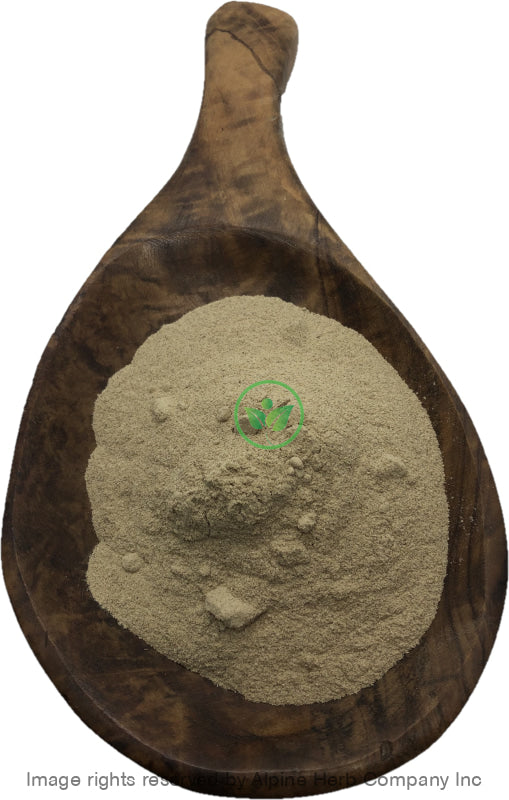Dandelion Root Powder Alpine Herb Company Inc.
$ 14,49 $ 8,69
Botanical Name: Radix taraxaci
Common Name:
- English: Dandelion
- Also, known as:Ackerzichorie, Amargon, Blowball, Butterblume, Cankerwort, Capo Di Frate, Chicoria Amarga, Cicoria Sarvatica, Dent-De-Lion, Dente Di Leone, Dhudal, Diente De Leon, Dhorsat Al Ajouz, Dudhi, Engraissa-Porc, Fl Orion D’or, Gol Ghased, Wiesenlattich, Witch Gowan, Yellow Gowan, Doon-Head-Clock, Milk Witch, Lion’s-Tooth, Monks-Head, Priest’s-Crown, Gemeiner Löwenzahn, Gobesag, Irish Daisy, Hindabaa Beri, Pu Gong Ying, Puffball, Pugongying, Hokgei, Kanphul, Kanphuli, Kasni Sahraii, Kettenblume, Khass Berri, Lechuguilla, Lion’s Tooth, Löwenzahn, Maaritpauncin, Marrara, Milk Gowan, Min-Deul-Rre, Monk’s Head, Mourayr, Mourre De Por, Mourre De Pouerc, Oduwantschiki, Paardebloem, Patalagagna, Peirin, Pfaffendistel, Pfaffenröhrlein, Pferdeblume, Pilli-Pilli, Piochoublit, Piss-A-Bed, Pissa-Chin, Pissanliech, Pissenlit, Poirin, Po-Kong-Young, Porcin, Pusteblume, Ringeblume, Salatta Merra, Kuhblume, Lagagna, Cicouureya De La Bonne, Cicoureya Deis Prats, Laiteron, Sanalotodo, Saris Berri, Seiyo-Tanpopo, Sofi One, Srissi, Tarakh-Chaqoune, Tarkhshaquin, Tarassaco, Taraxaco, Telma Retaga,
Habitat: Europe & Asia
Origin: Poland
Harvested: Cultivated
Part used: Leaves
General Information:
Radix taraxaci is an herbaceous perennial plant consists of a rosette of basal leaves and occasional flowering stalks. The name Taraxacum established around 1000 AD. More than 500 common names of Dandelions are there, and they have been recorded too. Dandelions are believed to be grown for about 30 million years ago in Eurasia. According to the historic records, these plants have been used by humans for food and as an herb.
Dandelion leaves are longer than 5–15 cm, simple, lobed, and form a basal rosette above the central taproot. The flower heads are yellow or orange colored. The heads are borne singly on a hollow stem that is usually leafless and rises 1–5 cm or more above the leaves. Stems and leaves exude a white, milky latex when broken. A rosette may produce several flowering stems at a time. The flower heads are 1–5 cm in diameter and consist entirely of ray florets.
Dandelion leaves are among our most nutrient-dense greens. The tender spring leaves are full of nutrients. It is a time-honored tradition in many countries in Europe to pick those spring greens and eat them, not only for their valuable nutrition, but also for their ability to stimulate healthy digestion. Dandelions are used as both food and medicine and can be eaten in fairly high amounts.
It is said that that the dandelion was intentionally brought to North America by European settlers who could not bear the thought of leaving this important food and medicine behind. In fact, dandelions are still admired in many European countries. The flowers are routinely made into jams and wine
How to use:
Powdered Herb:
There are different ways to use powdered herb.
Food Preparation: You can add powdered herbs to any super food, herbal smoothie, sauces, spreads and even cookies. Also for children, you can mix powdered herbs with honey or glycerin to make a paste. The thicker the paste, the more potent and herbal in taste. The sweet taste of honey and glycerin will help the medicine go down. This method is also known as “Electuaries”.
Capsules: Encapsulating your own powdered herb at home, give you assurance that the contents of the capsules are pure herb and no filler or any other products. These capsules can be taken with liquid.
Poultice: Poultice can be made with an herbal powder and liquid (mostly water) to form a paste which is then applied to the skin. This method is very helpful for skin conditions.
Herbal shot: Powdered herb can be mixed with water, fruit juice or other liquid to make herbal shot.
Precautions:
You should consult with a qualified healthcare practitioner before using any herbal products, particularly if you are pregnant, nursing, or on any medications.
All information on this website is for educational purpose ONLY
This information has not been evaluated by Health Canada.
This information is not intended to diagnose, treat, cure, or prevent any disease.
| Unit Size | 100g, 200g, 400g, 1kg |
|---|
Prompt shipping and expert packing
Thanks to our longstanding association with UPS FedEx DHL as well as other leading global carriers, we can offer a variety shipping options. Our warehouse staff is highly trained and will be able to pack your goods in accordance with our precise and exact specifications. Your items will go through an exhaustive examination before they will be securely packaged before being delivered. We ship to hundreds of thousands of customers daily in different countries. This is a sign of our determination to become the largest online retailer worldwide. Warehouses and distribution centers are located throughout Europe as well as in the USA.
Note that orders containing multiple items are processed according to the particular item.
We will thoroughly inspect all items ordered before shipping. Most orders are shipped within 48 hours. The delivery time will be between 3 and 7 working days.
Returns
The stock market is always changing. It's not entirely managed by us since we're involved with several entities, including the factory and the storage. Therefore, the actual inventory could fluctuate at any moment. Please be aware that it is possible that your order could be out of stock after you've placed your order.
Our policy lasts for 30 days. If it's been more than 30 days since the date you purchased your item We're sorry to say that we can't offer you a full exchange or refund.
You can only return a product if it is unused and still in the same state as when you received it. The item should be in the original packaging.
Related products
Herb Powder
Herb Powder
Herb Powder
Herb Powder
Herb Powder
Herb Powder
Herb Powder
Herb Powder
Herb Powder
Herb Powder
Herb Powder
Herb Powder
Herb Powder
Herb Powder
Herb Powder
Herb Powder
Herb Powder
Herb Powder
Herb Powder


































